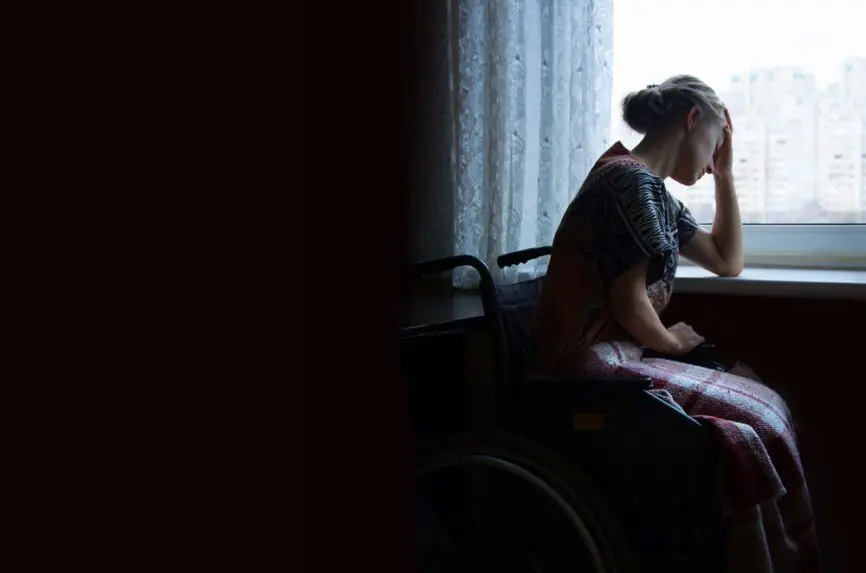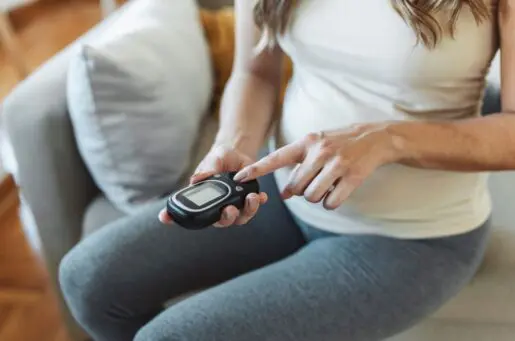Bioethics Forum Essay
Ending Medical Gaslighting Requires More than Self-Empowerment
Over the last few years, there’s been much discussion about gaslighting in general, and medical gaslighting in particular. Headlines include “How to Address ‘Medical Gaslighting’,” “Feeling Dismissed? How to Spot ʻMedical Gaslightingʼ and What to Do About It,” and “How to recognize ‘medical gaslighting’ and better advocate for yourself at your next doctor’s appointment.” Ilana Jacqueline’s forthcoming book, Medical Gaslighting: How to Get the Care You Deserve in a System that Makes You Fight for Your Life, is the culmination of much of this reporting.
Patients who are members of marginalized groups—women, Black people, trans people, elderly people, disabled people—are often dismissed, minimized, or altogether ignored by health care professionals. Over time, this can lead to gaslighting in which patients question their thoughts, feelings, symptoms, even themselves. As a result, they have difficulty advocating for themselves in medical contexts. This can result in delayed or missed diagnoses and ultimately to severe and enduring health (and other) consequences.
Many of the articles and other publications about medical gaslighting argue that if patients were better able to speak the language of health care professionals, they’d more likely be heard and taken seriously. They’d be better able to advocate for themselves when injustices and harms like gaslighting occur. Their situation and relationships with health care professionals, their care, and maybe even their health outcomes would improve. Thus, the argument goes, we ought to focus our attention on empowering patients to take charge of their health by equipping them with tools and strategies to educate themselves. Doing so will enable them to receive better medical care.
The problem with this argument is that it puts the responsibility on victims of medical gaslighting to do something about it. This is a worrisome response, as we discuss in our recent book, Microaggressions in Medicine. First, the suggested solution is not only a form of (unintentional) victim blaming, but it comes with ableist, classist, and racist implications regarding how people “ought” to communicate if they want to be taken seriously. Second, this solution fails to acknowledge the systemic nature of the problem, namely, the gross imbalance of institutional, professional, and epistemic power between health care professionals and patients.
Receiving high-quality medical care shouldn’t depend on one’s medical literacy, articulateness, education, or any other contingent factors pertaining to one’s identity. Most people don’t have much, if any, medical literacy, access to medical journals, or the ability to differentiate between more and less credible sources in a world with endless, often interest-driven, information and medical advice at our fingertips. Many cultural and social norms dictate that expert knowledge like that of doctors is not to be questioned. And many people – for good practical reasons–know that if they do question or challenge doctors, they’ll be viewed as “difficult,” “noncompliant,” or “angry” – particularly egregious, yet common stereotypes of Black women – which come with a variety of harmful repercussions for the kind and quality of care they receive.
Thus, we should avoid any recommendations that implicitly blame patients, their identities, cultures, communication styles, or social situations for their sub-par, inequitable care. Moreover, we should avoid putting the onus on patients–who are already ill, vulnerable, and often powerless in the health care system–to bring about systemic and structural changes.
Our position is that all patients deserve high-quality medical care. It is not up to patients to ensure that they receive it. Health care professionals and administrators should hold themselves and their teams accountable to make it so.
Of course, providing high-quality care to all patients is enormously challenging in our current nonideal health care system: clinicians are spread thin or burned out; they often lack the requisite time, resources, and support to have meaningful communication with patients; and many must adhere to productivity demands set by health care corporations that can compromise the kind and quality of care they’re able to deliver. Creating and maintaining conditions that lead to more just and equitable health care delivery is part of the structural piece of this complicated puzzle that’s worth paying attention to and points to issues that go beyond the need to simply “empower” individual patients.
Medical gaslighting is a real problem for marginalized patients. To fix it, we must place responsibility not on individual patients, but on medical educators, medical professionals, and health care institutions: those with the real power to make much needed structural and systemic changes and the moral obligation to treat all patients well and ultimately, to do no harm.
Lauren Freeman, PhD, is a professor of philosophy and director of the MA in Applied Philosophy at University of Louisville.
Heather Stewart, PhD, is an assistant professor of philosophy at Oklahoma State University.














I am not sure why you call this gaslighting. The fact is that, increasingly, people’s complaints are ignored by physicians. I have had that experience even as a medical student, when I became very ill suddenly and was new to the country. I went to see the medical services at the University and I was accused of malingering. I did not push hard enough, and it cost me. While I recovered, it was some two years later when I finally found a physician who actually listened, believed and made an accurate diagnosis. And yes, that gave me back my health. Subsequently, when my third child got suddenly ill at 7days of age, the paediatrician on call for my own paediatrician, called me a hysterical mother. I gave it to him with all I could. I remembered that I had the phone no. of my own paediatrician, called him a few hours later and the child was well looked after. More recently, as I aged and acquired some illnesses, I was given options that did not satisfy me. I was not happy. I pushed back and not always nicely or politely. During hospitalisation, I also found the staff useless and detached and unwilling to collaborate. It resulted in a 1/2 hour speech to a senior resident. To his credit, he learned the lesson. What this teaches me is that healthcare professionals, especially physicians are trained as technicians and are not trained adequately in the art of medicine, that is to treat people and not uniform machines. The time is well-past due for them to re-learn a bit of the old “art of medicine” as a healing endeavour. I was well-trained in those “arts”, starting with my own family doctor who taught me empathy and that each patient is unique. And that teaching was by his behaviour, peppered by a few well=placed anecdotes. More recently, in Medscape, an older Internist lamented the loss the the general internist practicing a more advanced form of family medicine. How right she is… I miss my internist who looked after me for many years… All the theoretical teaching is for naught, if teachers do not lead by example as well. To the credit of the University of Torontio, they now have patient teachers to teach students how to deal with patients properly, regardless of class, education, status, etc. etc.
This article hits a personal chord and poignantly describes our recent family experience at a large medical center. After a diagnosis of locally metastatic melanoma, my 90 year old mother was offered, surgery, radiation or immunotherapy. I have worked in healthcare for 40 years, but I am not a physician. I believed I had performed my due diligence researching the risks/benefits of this promising new novel therapy. The elderly usually have multiple co-morbidities which place them in a much higher risk category then the patients used in clinical trials. This possibility of life threatening severity was relayed in one sentence, through our discussion with the oncologist. If we had been given fragility assessment tool to work through, to determine if this was the very best treatment for a 90 year old to receive, very possibly would have ruled this therapy out, and a palliative course providing good pain control and quality of life would have been seriously considered. Unfortunately, believing and trusting our oncologist, my Mother had the immunotherapy. She was hospitalized after the first dose, and then sent home. After the second dose she suffered life threatening side effects, that left her in hospital for 6 months, and she eventually succumbed to her illness. After she was admitted, I did more research and discovered this treatment is not well tolerated, nor represented in the very elderly population. In the interests of transparency, this would have been information we would like to have known during the consent process. During this 6 month horrific experience, when I brought up the fact that she was 90, and likely should not have received this treatment, and the reply was always “she signed the consent”. A paper authored by some of the physicians that treated her spoke to the contrary for success of this treatment in the very elderly. This makes one wonder, if she would be another statistic for a future paper. Transparency during consent is paramount, God help you if you have no one to advocate for you, and they had better have a background in healthcare.
This is a valuable post on medical gaslighting and the implications of depending on patients’ health literacy to lessen its occurrence. While it is imperative for patients to self-advocate, it can shift the responsibility onto individuals already facing systemic barriers related to their health. This approach can inadvertently perpetuate victim-blaming, particularly for marginalized groups who often encounter bias and dismissal from clinicians professionals. Change begins with acknowledging the broader systemic issues that contribute to gaslighting, rather than placing the responsibility on patients to navigate these challenges individually.
Informed consent may be compromised by medical gaslighting. As Boakye et al. discuss in a study of Black obstetric patients, “A negative care experience not only compromises the ability of Black women to communicate their health concerns but can also force them to obscure credible information that is required to provide appropriate interventions” (2024). This leads to a cycle of mistrust and further invalidation. Conversely, effective informed consent practices can help prevent medical gaslighting by fostering open communication and respect for patient autonomy.
It is crucial to demand responsibility from healthcare organizations and providers. The ability of a patient to communicate their wants or comprehend medical jargon shouldn’t be a prerequisite for receiving quality medical care. This expectation creates a barrier in patients to provide informed consent Many people may not have access to the tools needed for effective self-advocacy, and it is sometimes frowned upon by society norms to question authority figures such as doctors. Therefore, to ensure that they interact with all patients in a courteous and understanding manner, healthcare workers must receive training in cultural competency and empathic communication.
Ultimately, providers, institutions, and educators must work together to improve the healthcare system. We may address the underlying causes of medical gaslighting by making fundamental changes that prioritizes and supports equitable care. It is everyone’s duty to make sure that every patient feels heard and appreciated, and it is essential that those in positions of authority act to promote a more equitable and supportive healthcare system for all.
Medical gaslighting has become a significant focus for both patients and the medical community as they work to shift the burden away from patients having to understand complex medical care and toward addressing systemic issues within healthcare. This argument is compelling because it redirects responsibility from the patient to institutional accountability, aligning with core medical principles of justice and nonmaleficence.
As an ICU nurse, I have seen firsthand how disparities in care and communication can significantly impact patient outcomes. In critical care environments, where time is of the essence, patients and their caregivers are particularly vulnerable to miscommunication or dismissal, which can increase their stress and erode their trust in the healthcare team. Medical gaslighting, specifically, can lead to patients and caregivers losing confidence in questioning medical decisions when they feel dismissed or unheard. It is deeply concerning when patients are marginalized due to language barriers, cultural differences, or limited medical literacy. This is why I believe the responsibility should not fall on patients to navigate these power imbalances. Healthcare professionals should receive more training in communication skills and in recognizing their biases toward patients. We are accountable for advocating for our patients and addressing their needs and concerns. I have had patients tell me they felt unheard, rushed, or dismissed regarding their care, which changes their perception of providers and affects their trust in who is genuinely taking the time to care for them holistically. It is truly unfortunate when patients feel unheard or unrecognized in matters concerning their own health.
The essay addresses a critical ethical concern: asking marginalized patients, who already face social, economic, and racial barriers, to take charge of their medical advocacy overlooks the institutional failures that allow gaslighting to persist. Patients should not be tasked with solving the very injustices they face. A more ethically sound approach would focus on systemic reforms, such as training healthcare providers to recognize their biases, fostering a culture of empathy, and implementing policies that ensure accountability. This shift aligns with the broader ethical obligation to dismantle oppressive structures in healthcare, ensuring that all patients, regardless of background, receive the care they deserve. Addressing medical gaslighting requires structural change, not individual empowerment, grounded in the ethical imperatives of justice, nonmaleficence, and a commitment to equitable care. Healthcare professionals and institutions must lead the charge to reform a system that too often harms the most vulnerable. Institutions and providers should actively listen to patients when they voice concerns about medical gaslighting, using that feedback to identify gaps in care and drive needed improvements.
Medical gaslighting has been such a hot topic in the news and for very good reasons. With the costs of healthcare rising and the quality of care declining it is very understandable to be upset after leaving an appointment feeling like your concerns were not heard. My first impression of this essay is despair for the victims being disregarded by medical professionals. I agree with the sentiment that it is not the responsibility of the patient to increase their medical knowledge in order to advocate for their care. When someone is seeking medical treatment they are already faced with feelings of uncertainty and possibly fear, they should not be put in a more compromising position by expecting them to also educate themselves and come equip with adequate lingo and talking points. This can create a strained relationship between provider and patient, putting the patient on the defense when they’re already in such a vulnerable state. It is the responsibility of the provider to ensure the patient understands what is on with their treatment, available treatment options as well as the benefits and harm for each.
Reading this article as a healthcare provider myself, I can understand from the prospective of the provider the constraints associated with patient care. There is a constant pressure from healthcare institutions to get patients in and out as quickly as possible. This does not allow for ample time to explain (or reexplain) complex conditions to ensure a patient has a comprehensive understanding. Of course, it is easier if a patient comes in prepared with questions and using the “proper lingo” however, this can also backfire. Without having the extensive education providers go through, a quick google search can cause a lot of misinformation and misinterpretation. Is there a solution to the problem of medical gaslighting? In my opinion, it starts from the top down. If institutions and insurance agencies allow for providers to spend more time with their patients, it can help to prevent medical gaslighting. It would also be helpful for educational institutions to provide courses on how to communicate with patients and their caregivers, specifically focused on addressing marginalized groups. This will help ensure patients’ problems are being addressed and will ultimately lead to more trust in the healthcare community.
I appreciate that this topic has recently become so widely discussed. For a long time patients have suffered silently having to leave an appointment feeling their concerns are not being taken seriously. I encountered this personally working in an ER; I have seen women in particular come in after their physical health declined and turned into an emergency, because they were diagnosed with anxiety by an outpatient provider for their stomach pain that turned out to be an emergency regarding their appendix or gallbladder. Not only can women’s concerns be diminished, but in ERs they can often wait longer to see a provider compared to men who present with the same symptoms.
On top of that, the idea that patients should present their symptoms in more “fancy” medical terms in order to be taken seriously just adds to the frustration. This turns into them being seen as a patient who likes to diagnose themselves and come in telling the provider what to do. Sadly patients really can’t win when trying to take these matters into their own hands. This is why it’s so important the healthcare system does their part to tackle this crucial issue. An approach that may make a large difference may be educating providers and healthcare workers in general about this unfortunate phenomenon of medical gaslighting. This increasing of awareness is a crucial first step to ensure patients can go to their provider and not worry about resorting to the ER soon after when they aren’t taken seriously.
As someone who is very well-informed about my own condition – far beyond what is expected of a patient – I feel compelled to share a perspective on this issue.
I have a condition that involves multiple organs and diagnoses, the treatment of which is complex and not very easy. I am deeply familiar with the anatomical, physiological, and therapeutic dimensions of my illness. I regularly read clinical studies, often more current than the knowledge held by the physicians I meet. I speak fluent medical terminology, understand the mechanisms of interventions, and approach clinical consultations as collaborative decision-making processes. Some of the most respected specialists I’ve encountered have openly expressed admiration for my level of insight and self-awareness.
Yet, my competence is often perceived not as a resource, but as a threat. When I offer thoughtful input about potential treatment paths, including suggestions, preferences and objections, I am often labeled as difficult and demanding. My knowledge often exposes gaps in theirs. Many clinicians are accustomed to not having to think deeply or critically, relying instead on oversimplified, one-size-fits-all approaches and the most common diagnoses. When my understanding challenges their assumptions, I am pathologized rather than heard. It often takes the fifth or sixth opinion before a top-tier physician finally says, “You were right all along.”
Yes, it is precisely because of my medical literacy and persistence that I’ve been able to avoid inappropriate or even harmful treatments, dismissal and death. I have walked out of countless clinics when I recognized incompetence or unwillingness to listen. I refused to settle for inadequate care, and instead sought out those rare physicians who were both knowledgeable and willing to engage in true dialogue. In this way, I protected myself, but only at the cost of considerable emotional stress, trauma, lost time, financial strain, and extensive travel.
I should add that I am a young immigrant woman. I speak the local language fluently, but with a clear accent. I have no doubt this plays a role in subtle power dynamics and how I am perceived and treated.
What this experience reveals is that the ego, power, and the deeply entrenched “Doctor-God” archetype often mask a reluctance to think critically, to accept feedback, or to admit that something might have been done imperfectly. I don’t expect perfection. I fully accept that doctors can make mistakes. But I do expect humility, critical thinking, and a genuine investment in care.
What is needed is a fundamental shift in mindset among clinicians: toward a more humane, humble, and collaborative approach. To truly serve patients, physicians must cultivate empathy, practice active listening, and recognize the limits of their own knowledge. This means being open to learning not only from textbooks and conferences, but also from the lived expertise of those they treat. Only through such humility and a genuine investment in the person can the clinician-patient relationship begin to heal.